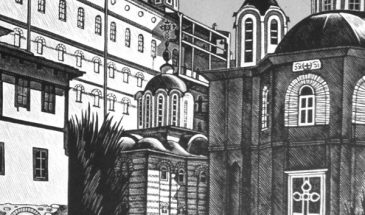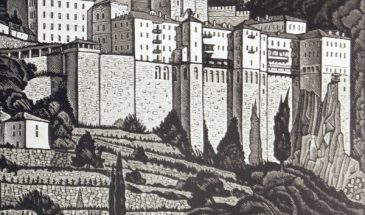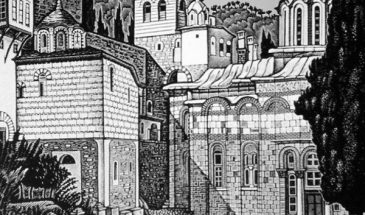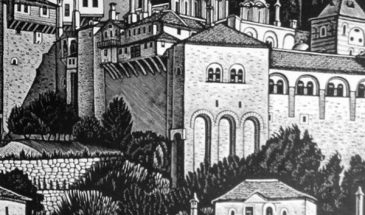- Overview
- Itinerary
- Included
- Not Included
- Gallery
- Booking
One day Mount Athos A’
Mountain Athos is the top site to experience simultaneously the imprint of historical time together with its absolute absence. Throughout the course of history, the achievements of Greek civilization are preserved not only to maintain the knowledge of the past, nor just for esthetic reasons — they are also practiced in the daily routines of the monks, thus creating a bridge between history and the modern world.
No details found.
Itineraries
Ouranoupoli
Morning
Meet your guide and depart for Ouranoupoli. You will first stop at the pilgrim’s office to get the entry permit for Mt. Athos.Monastery of St. Panteleimon
1st stop
From Ouranoupoli you will set sail for the small dock of the Monastery of St. Panteleimon. Since 1835 the Monastery has been inhabited by Russian monks. The Holy Monastery is home to a rich collection of heirlooms such as donations offered by various Tsars, holy vestments, a part of the Holy Cross and icons among which are the wonderworking icon of Panagia Odigetria (Virgin Mary that Leads) as well as the wonderworking icon of St. Panteleimon. According to tradition, the latter originates from the small monastic settlement of Xylourgos that was founded in 1030. Once your tour in the Monastery of St. Panteleimon has been completed, you will continue with a visit to Vatopedi Monastery.Vatopedi Monastery
2nd stop
It is the second largest complex of buildings in Mt. Athos after the one of Megisti Lavra. Vatopedi Monastery is home to many icons depicting Virgin Mary, such as: Panagia Pantanassa, Panagia Esfalmeni, Panagia Antifonitria, Panagia Paramythia, Panagia Ktitorissa, Panagia Vimatarissa, Panagia Pyrovlithissa, Panagia Eleousa and Panagia Eleovrytissa. Parts of the Holy Cross are kept in the sanctuary together with one of the three parts of Virgin Mary’s Holy Girdle, the Holy Skull of St. John the Baptist and the Holy Skull of St. Gregory the Theologian. The imperial, royal and other offerings which are kept in the sacristy are also worth seeing.Monastery of Pantocrator
3rd stop
You will then be transferred to the Monastery of Pantocrator, which resembles a medieval castle. The two brothers, Alexios Stratopedarchis and Ioannis Primikirios, buried in the narthex of the katholicon, where the founding fathers of the monastery during the 14th century. The katholicon is dedicated to the Resurrection of Christ. Many cells and chapels are in the diocese of the Monastery. The cell of Axion Estin is the most important of all since it has been named after the wonderworking icon of Virgin Mary that was kept there. Nowadays, the icon is hosted in Protaton, home to the administration of Athos. The icon of Panagia Gerontissa, which was given as a gift by the Byzantine Emperor Alexios I Komnenus, is now the Monastery’s main icon. Many holy heirlooms and holy relics can also be seen there, such as a part of the Holy Cross and the relics of St. Andrew and St. John Chrysostom.Skete of St. Andrew the Apostle (Sarai)
4th stop
Continue with a visit to the Skete of St. Andrew the Apostle (Sarai) where important heirlooms are kept. The wonderworking icon of Panagia Paramythia (All-holy Virgin the Consoler) is one of them as well as a part of the Saint’s frontal bone, which is in the kyriakon of the Skete.Karies
5th stop - Noon
After that, you will go to Karies, the capital, where the administration of Athos is based. The Administration consists of two bodies: the Holy Community and the Hiera Epistasia. The Church of Protaton, dedicated to the Dormition of the Theotokos, is the core of the Administration. The original temple was demolished around 960 AD and a new one was erected; one that is renowned and prevails in the area to this day. Important frescoes decorate the interior of the temple, many of which are the work of Manuel Panselinos, the famous representative of the Macedonian School. The renowned wonderworking icon of Panagia Axion Estin, is also kept in the Church. The icon itself was named after the homonymous hymn that was first sung by the angel to honour the icon’s grace.Monastery of Iviron
6th stop
Next, you will visit the Monastery of Iviron, where you may pay your respects to the wonderworking icon of Panagia the Portaitissa (All-holy Virgin of the Gate), one of the most famous and revered icons of the area. The icon was miraculously delivered to the Monastery via sea in the early 11th century. According to tradition, it belonged to a pious widow in Nice. When the iconoclasts arrived at her door and demanded that she would hand it up, the widow managed to convince them to let her keep it for another day. In the meantime, she threw the icon in the sea. To her surprise, though, the icon rose from the water and begun to pull away until it completely vanished into the horizon. One night, many years later, the monks of Mt. Athos suddenly saw a beam of light. They could just barely make out that it was an icon of Mary. Panagia herself chose the monk worthy of approaching the icon and bringing it on shore. In a rejoicing atmosphere the icon was transferred to Iviron Monastery where it is kept to this day. In the sacristy of the Monastery you can also find holy relics, gold-work embroidery vestments, and the bag of the Emperor Ioannis Tsimiskis, the mantle of St. Gregory V as well as the will that he left. Along with the many relics, part of the Holy Cross is also kept in the sacristy with other heirlooms that date to the merciless Passions of Christ. Such heirlooms are: pieces of the sponge, the reed, the cloak and the column where He was whipped.Ouranoupoli
7th stop - Afternoon/Return
Leaving the Monastery of Iviron behind you, you’ll be transferred to the port of Daphne, embark for Ouranoupoli and then you will transfered to the hotel.Included in the price are:
- Transportation from/to your hotel
- Transportation from/to Ouranoupoli
- Tour guide services
- Entry permit
No details found.
No gallery images found.





